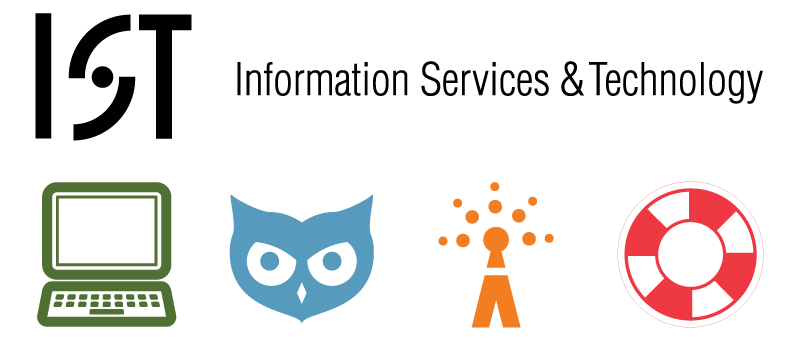
Last Updated August 31, 2011
- Download the latest version of software for Student VM and save those to a folder on your host machine or network share.
- VLC 1.1.11
- SecureCRT 6.7.1 32 bit
- JDK 6 u 27 w/ NetBeans 7.0.1
- Firefox 6.0
- Emacs 23.3
- Adobe Reader 10.x
- Download and extract the Base VM produced by SWRT.
- Launch the VMX file to Open the VM
It will go through a series of installation routines in the end you will have the System Preparation Tool 3.14 window open - Map a drive to the folder with the installers (either local host or network share).
- Install each application. Restart as necessary.
- Firefox
- VLC
- SecureCRT/FX
- JDK with NetBeans
- Emacs - drag folder to Program Files and run emacs-23.3\bin\addpm.exe
- Adobe Reader (installation downloads latest at install time)
- Change the default background image
Replace c:\oem\backgrounds\mit-base.bmp with alternate background image - Update Support Information
- Run regedit
- Update in HKLM\SOFTWARE\Microsoft\Windows\CurrentVersion\OEMInformation
Model = Student VM Mon Year
- Add shortcut to Introduction to the Student VM http://ist.mit.edu/services/software/vmware/student-image/intro to C:\Users\All Users\Microsoft\Windows\Start Menu\Programs\Startup
- Reset Page File - figure out what we should set it to
- Setup Pharos Printing using PopUp Client
- https://kb.mit.edu/confluence/display/istcontrib/Install+Pharos+client+on+Windows
Note: only the Pharos Color Printer shows up in the Printers and Devices Control Panel, but both BW & Color are available when you select a printer to print.
- https://kb.mit.edu/confluence/display/istcontrib/Install+Pharos+client+on+Windows
- Apply Windows & VirusScan Updates
- Windows Updates
- Run "windows update"
- Apply all important updates (these are taken from the MIT WAUS already configured in the Base VM)
- Restart if necessary
- Virus Scan Enterprise Updates
- Right click on the VS shield and click Update Now
This will apply the latest DATs etc.
- Right click on the VS shield and click Update Now
- Windows Updates
- Make a Pre-Generalization Backup of the VM
- Shutdown using the Start Menu
- Close the VM in VMware (to remove the lock file)
- Make a copy of the .vmwarevm folder including the vmx and vmdk files. about 13 GB
- Now you are ready to begin the Generalization Process
Generalizing the Student VM
- Open and Power On the VM you just modified
- IMPORTANT Edit the unattend.xml file according to the instructions to rearm for sysprep.
- Perform the following edits:
Old Value
New Value
<settings pass="oobeSystem" wasPassProcessed="true">
<settings pass="oobeSystem">
<Mode>Audit</Mode>
<Mode>OOBE</Mode>
<settings pass="generalize" wasPassProcessed="true">
<settings pass="generalize">
<SkipRearm>1</SkipRearm>
<SkipRearm>0</SkipRearm>
- Perform the following edits:
- In SysPrep window
- Check the Generalize Box
- Make sure Shutdown Option is set to Shutdown
- Make sure System Cleanup Action is set to Enter System Out-of-Box Experience (OOBE)
- Click OK and wait
You will end up with the VM closed in VMware.
Final edits of the VMware configuration and cleanup of folders
- Edit the .vmx file
- Change the VM Name to "Windows 7 SP1 Student - x32"
- Make sure path to vmdk is relative. If you used snapshots at any point, it has probably reverted to an explicit path.
- Replace all sharedFolder entries with the following to enable mirror on Macs of Documents and Desktop. You may have to find a few hiding entries that are not together.
sharedFolder0.present = "TRUE"
sharedFolder0.enabled = "TRUE"
sharedFolder0.readAccess = "TRUE"
sharedFolder0.writeAccess = "TRUE"
sharedFolder0.hostPath = "~/Desktop"
sharedFolder0.guestName = "My Desktop"
sharedFolder0.expiration = "never"
sharedFolder1.present = "TRUE"
sharedFolder1.enabled = "TRUE"
sharedFolder1.readAccess = "TRUE"
sharedFolder1.writeAccess = "TRUE"
sharedFolder1.hostPath = "~/Documents"
sharedFolder1.guestName = "My Documents"
sharedFolder1.expiration = "never"
sharedFolder.maxNum = "2"
hgfs.redirectShellFolder.maxNum = "4"
sharedFolder0.shareTags = "auto,desktop"
sharedFolder1.shareTags = "auto,documents"
hgfs.redirectShellFolder0.name = "desktop"
hgfs.redirectShellFolder0.enabled = "TRUE"
hgfs.redirectShellFolder1.name = "documents"
hgfs.redirectShellFolder1.enabled = "TRUE" - Remove the UUID and Ethernet entries according to Windows 7 Reference VM Setup to remove the VMware ids.
- Make sure CDROM is set to Auto
ide1:0.deviceType = "cdrom-raw"
ide1:0.fileName = "auto detect"
ide1:0.present = "TRUE"
ide1:0.startConnected = "TRUE" - Save and exit the .vmx file.
- Delete all files in the .vmwarevm folder except the .vmx and the vmdk folder.
- Copy vmx_enable_sharing.vbs into the .vmwarevm folder (this is the script to covert the vmx configuration file on Windows hosts to mirror the Desktop and My Documents.
- Zip up the folder using 7-zip
TEST
Overview
Content Tools
Activity